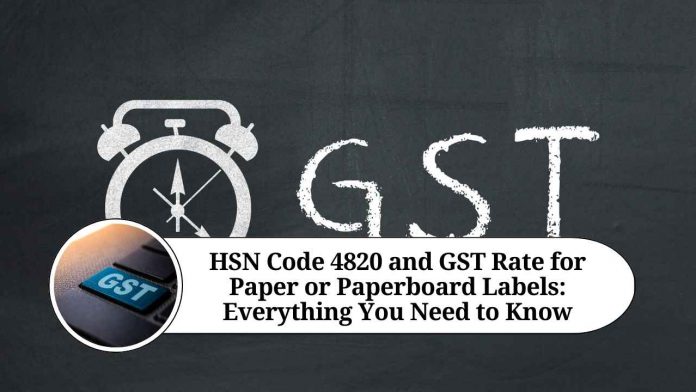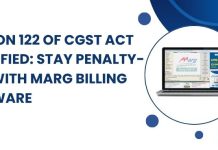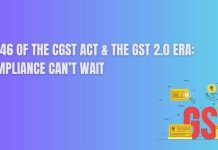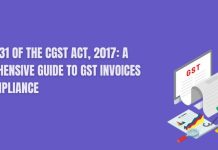Introduction
In India, the Goods and Services Tax (GST) is a comprehensive indirect tax that has replaced various indirect taxes imposed by the central and state governments. The GST system uses Harmonized System of Nomenclature (HSN) codes to classify goods and services. HSN code 4820 is used for the classification of paper or paperboard labels of all kinds, whether or not printed. In this blog, we will discuss the GST rate applicable to HSN code 4820.
HSN Code 4820
HSN code 4820 is used for paper or paperboard labels of all kinds, whether or not printed. This includes labels used for packaging, shipping, identification, and any other purpose. The HSN code is used to classify these labels based on their type, size, and other characteristics.
GST Rate Applicable
The GST rate applicable to HSN code 4820 is 18%. This means that any paper or paperboard label classified under HSN code 4820 will be subject to a GST rate of 18%. It is important to note that this rate may vary based on the type of label and its intended use.
Impact on Businesses
For businesses involved in the production or sale of paper or paperboard labels, the 18% GST rate can have a significant impact on their operations. They must ensure that they are correctly classifying their labels under HSN code 4820 to avoid any penalties or legal issues. Additionally, the GST rate will impact the pricing of these labels, and businesses must factor in the 18% rate when setting prices for their products.
Potential Challenges
While the GST rate for HSN code 4820 is set at 18%, there may be challenges in correctly classifying paper or paperboard labels under this code. Some labels may have unique characteristics or uses that may not fit neatly into this code, making it difficult to determine the correct rate of tax. In such cases, it is important to seek the advice of a tax expert to ensure compliance with GST regulations.
Additionally, the GST rate for paper or paperboard labels may impact the pricing of other products that use these labels. For example, a product with a higher number of labels may be subject to a higher rate of tax, which could increase the overall cost of production. Businesses must carefully consider the impact of GST rates on their pricing strategies to remain competitive in the market.
Benefits of GST
Despite the challenges associated with GST rates, the introduction of GST has brought several benefits to the Indian economy. It has simplified the tax system, reduced the burden of compliance, and eliminated various indirect taxes, leading to a more efficient and transparent tax system. The implementation of GST has also helped to boost trade and investment in India, making it a more attractive destination for businesses and investors.
Conclusion
In conclusion, HSN code 4820 is used for paper or paperboard labels of all kinds, and the applicable GST rate is 18%. While this rate may have an impact on businesses involved in the production or sale of these labels, it is important to ensure compliance with GST regulations to avoid legal issues. The introduction of GST has brought several benefits to the Indian economy, and businesses must carefully consider the impact of GST rates on their pricing strategies to remain competitive in the market.
Read more useful content:
Frequently Asked Questions (FAQs)
What is HSN code 4820?
HSN code 4820 is used for paper or paperboard labels of all kinds, whether or not printed. This includes labels used for packaging, shipping, identification, and any other purpose.
What is the GST rate applicable for HSN code 4820?
The GST rate applicable to HSN code 4820 is 18%.
Are there any exemptions to the GST rate for HSN code 4820?
No, there are no exemptions to the GST rate for HSN code 4820.
Is it necessary to use HSN codes for GST compliance?
Yes, it is necessary to use HSN codes for GST compliance. HSN codes are used to classify goods and services for the purpose of tax calculation under GST.
Can the GST rate for HSN code 4820 change in the future?
Yes, the GST rate for HSN code 4820 can change in the future, based on government policies and regulations.
What are the potential challenges in correctly classifying paper or paperboard labels under HSN code 4820?
Some labels may have unique characteristics or uses that may not fit neatly into this code, making it difficult to determine the correct rate of tax. In such cases, it is important to seek the advice of a tax expert to ensure compliance with GST regulations.
How can businesses ensure compliance with GST regulations for HSN code 4820?
Businesses must ensure that they are correctly classifying their labels under HSN code 4820 to avoid any penalties or legal issues. They can also seek the advice of tax experts to ensure compliance with GST regulations.
What are the benefits of the GST system in India?
The GST system in India has simplified the tax system, reduced the burden of compliance, and eliminated various indirect taxes, leading to a more efficient and transparent tax system. It has also helped to boost trade and investment in India, making it a more attractive destination for businesses and investors.
Can GST rates impact the pricing of other products that use paper or paperboard labels?
Yes, the GST rate for paper or paperboard labels may impact the pricing of other products that use these labels. Products with a higher number of labels may be subject to a higher rate of tax, which could increase the overall cost of production.
How can businesses factor in GST rates when setting prices for their products?
Businesses must carefully consider the impact of GST rates on their pricing strategies to remain competitive in the market. They can factor in the 18% GST rate for paper or paperboard labels when setting prices for their products, to ensure compliance with GST regulations and remain competitive in the market.




















